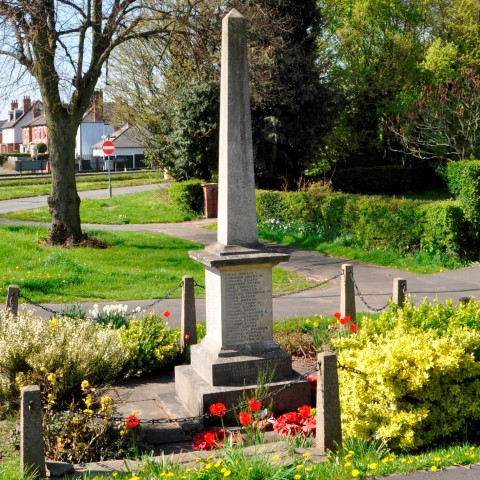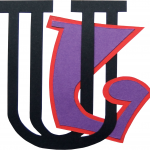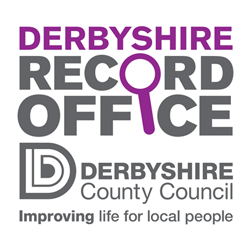“Miss Malpas” – Borrowash Junior School 1969 to 1971 – Gill Gower
Borrowash Junior was the first school I taught at after graduating. I was Miss Malpas in those days. I taught Second Year Juniors.
From September 1969 to July 1970 I taught in the main school building.
The following year my classroom was in the”annexe” i.e. the original old two-room school building.
The Main School
In the main school my classroom was opposite that of my friend Jean Reavley. Between the two classrooms was a shared art area. Sacks of silver milk bottle tops were kept there to give to Guide Dogs For The Blind. Despite careful washing by the “monitors” the tops always smelt of sour milk. The tops were from the third pint bottles of milk which all children had free.
A very nice lady (whose name I forget) was Teacher’s Assistant for the whole school She didn’t actually teach groups of children as Assistants do nowadays. Teachers took it in turns to have her help making exercise books or putting up displays. There was a fashion for children having exercise books in interesting shapes or sizes. Each day she would mix up powder paint and water and also make up a bucket of wallpaper paste for the children of the school to use as glue. You would send a child to the staffroom with an old jam jar which she would fill with paint or glue as required. The child carefully carried the glass jar back to the classroom. Probably Health and Safety wouldn’t allow it now, but being allowed to do this duty was much prized by the children.
The assistant also made tea and coffee for the staff. She had a chart so that she could make it for each person exactly how they liked it, with the right amount of sugar. She did all the washing up too. It was so nice to be looked after like that. I’ve never come across it in any school since.
She would bring your tea out to you if you were on Playground Duty. Duty consisted of walking up and down a raised path above the playground, and watching the children playing down below. The clever design gave you a clear view of the whole playground. At playtime monitors sold packets of crisps from big cartons, the profit in aid of school funds.

School dinners
All members of staff were expected to have dinner with the children. We sat at tables of eight, with a teacher or 4th year prefect in charge of each. Two older children from each table would collect the food, such as a large pie and two dishes of vegetables and the head of table would divide it up and serve it out. There was no choice, and children were expected to at least try everything. That way the children had a balanced meal. They could ask for a small helping if they wished. Children were expected to talk quietly and there was a chance to teach good table manners. There was very little waste of food, anything left over on each table was given out as “seconds”.
The annexe
The annexe was a little brick-built building. Between the two classrooms was the children’s cloakroom and toilets. The toilets were very smelly unlike the nice new ones in the main school ! But the classroom itself was a pleasant room, quite well lit and spacious. There was even room for an old piano. There was a big revolving blackboard on one wall, and on the opposite side of the room were three wall blackboards which slid to reveal a cupboard behind them. The cupboard was always so full of chalk dust it was unusable for most things, I used it to store empty cardboard boxes which the children brought in for model making. Those whose mothers worked at British Celanese also brought in lots of ribbon of all types which was also useful for craft work.
There was no National Curriculum. The Headmistress gave me a single sheet of paper which had my syllabus for the year. The work to be covered was divided between the four years, it all seemed to work very well. These are some of the subjects we did:

Maths
As far as I remember, the First Years learnt the 2,3,5 and !0 times Tables. We had to do the rest. We had a tables test every week. The children had to learn their tables at home, I remember being in trouble because I let them take little notebooks home with the tables to learn. The Head told me “You must never let school property go home , you won’t get it back !”
There was a shortage of textbooks, so most work was done from the blackboard. Each day I would write sums on the blackboard. I remember Jacqui, Karen Dunn and Tony all working at top speed trying to finish first with all correct answers. They were all three very clever, so it was a close thing.
Practical maths such as measuring, came up a lot in Topic work
English
There was a little bookcase in the classroom, built in under the blackboards. We had silent reading after lunch each day. I would try to hear everyone read in turn, giving extra help to those who found reading difficult. Once a term, the library van would arrive and each child could choose a book for their class. Anything with “Adventure “ in the title was popular, I remember one boy being very disappointed when he tried to read his rather hasty choice – “Adventures in Algebra”.
Apart from a weekly spelling test there was very little formal English taught. At that time it was fashionable for English to be taught by getting the children to write stories and factually about topics that interested them. Sometimes I made up grammar exercises too, and wrote them on the blackboard, although very unfashionable at the time, they were surprisingly popular, as the children liked getting a row of ticks, rather than having to be “creative” all the time. Each child chose one topic per term to write about, in their interestingly shaped exercise books. By far the most popular subject for the boys was Derby County Football Club. Other topics would be based on a favourite hobby or such subjects as Animals or Transport. We also did whole class topics based on a television series .
The television was in the Small Hall, some distance from the Annexe. With no video recording, you had to remember to get there in time. Quite often we would end having to run down the steps and along the paths to arrive in time, the children breathless but excited .
Science
The only Science taught was Nature Study. We had a weekly radio programme in the classroom.
The children had to put their heads on their folded arms on the desks, shut their eyes and listen. After the programme we would have a short written test to see how much they remembered. Interestingly it wasn’t the most academic children who remembered most.
The headmistress insisted on the weekly radio programme, as it taught them to concentrate. At first I thought it was a bit old-fashioned, but I came to see that she was right.
History
History was divided up up neatly between the four years. The First Year Juniors did history up to 1066. I remember their classroom featuring papier mache dinosaurs. We had 1066 to the Wars of the Roses. In the cupboard behind the blackboards, I found some ancient history comprehension books, covered in chalk dust Once dusted off, the children enjoyed these. But like grammar exercises comprehension was so unfashionable at the time that I used the books without telling anyone. .Other history was taught by topics. One term we did Medieval castles as a topic, writing in castle shaped exercises books We made model castles out of cardboard boxes.
The County Museum Service
The County Museum Service would lend each class one exhibit per term. It was usually random what we got. Often it would be a stuffed animal such as a badger or a fox – not very interesting. But the term we were studying castles we were lucky enough to borrow a big, beautifully detailed model of a medieval castle.
Music
Once a week we had the use of the piano in the Small Hall, much more in tune than the old one in the classroom. We sang folk songs from The Oxford School Songbook, the only book available.
There was an old record player in the classroom, and I played classical music for the children to listen to during “silent” recording. It helped to mask the embarrassment of reading aloud to me for whichever child had a turn, which was handy if they were struggling. The children took real interest in quite sophisticated music. The only instrumental tuition in those days was the recorder. Jean Reavley and I both took groups.
Art and Craft
There was a severe shortage of equipment for this, but we did lots of box modelling, drawing and painting. Jean had the idea of teaching her class to knit, it was so popular, I did the same. The children had to bring in their own wool and pins. The boys were particularly enthusiastic, as they all wanted to knit Derby County scarves.
Christmas
The children made decorations for the classroom each December.
The school rule was “nothing Christmassy before December, or the children will get over-excited.”
That made for quite a rush to learn carols and lines for the Nativity play.I remember a scene in the play where “shepherds” had to act being asleep, and an angel appeared and proclaimed “Awake, I bring you Good News”. Unfortunately, David from my class actually fell asleep, and the angel had to kick him to wake him up.
French
At that time the children learnt French every day in the top three years of the Junior school. It was entirely spoken French. They learnt very fast and were very enthusiastic. I also taught French to another class (Mr Melchor I think his name was) while he took my class for PE and games.
School trips
We rather envied the top class who were the only ones allowed to go on outings to Elvaston Castle, since it was so near they could visit fairly frequently. One year we went on a canal boat trip, and the other year to Alton Towers. At that time there was no theme park at Alton towers, just the gardens and a large model railway in one room of the castle. Both outings were enthusiastically appreciated however.
PE and Games
I didn’t teach these, but had have my class ready changed for PE with Mr Melchor first period every Monday morning. Simultaneously with helping 30 children get changed FAST , I had to collect in the week’s dinner money. At that time, Britain was changing over to decimal currency, so there would be a mixture of both types of coins. No-one paid by cheque for the term then. Some children would bring banknotes, often wrapped up in a bit of paper that said, “sorry not got the right money.” So I would have find the right change to send home or sometimes tell the child to rush down to another classroom to pay for a brother or sister. Money had to be added up and entered into the dinner register correctly, while untying knots in shoelaces etc. It was always a terrible rush. After that the week got much easier. Borrowash children were so well behaved, polite and enthusiastic. It was a happy school, but I left after two years in search of promotion, and especially a job much nearer my home..
Gill Gower






